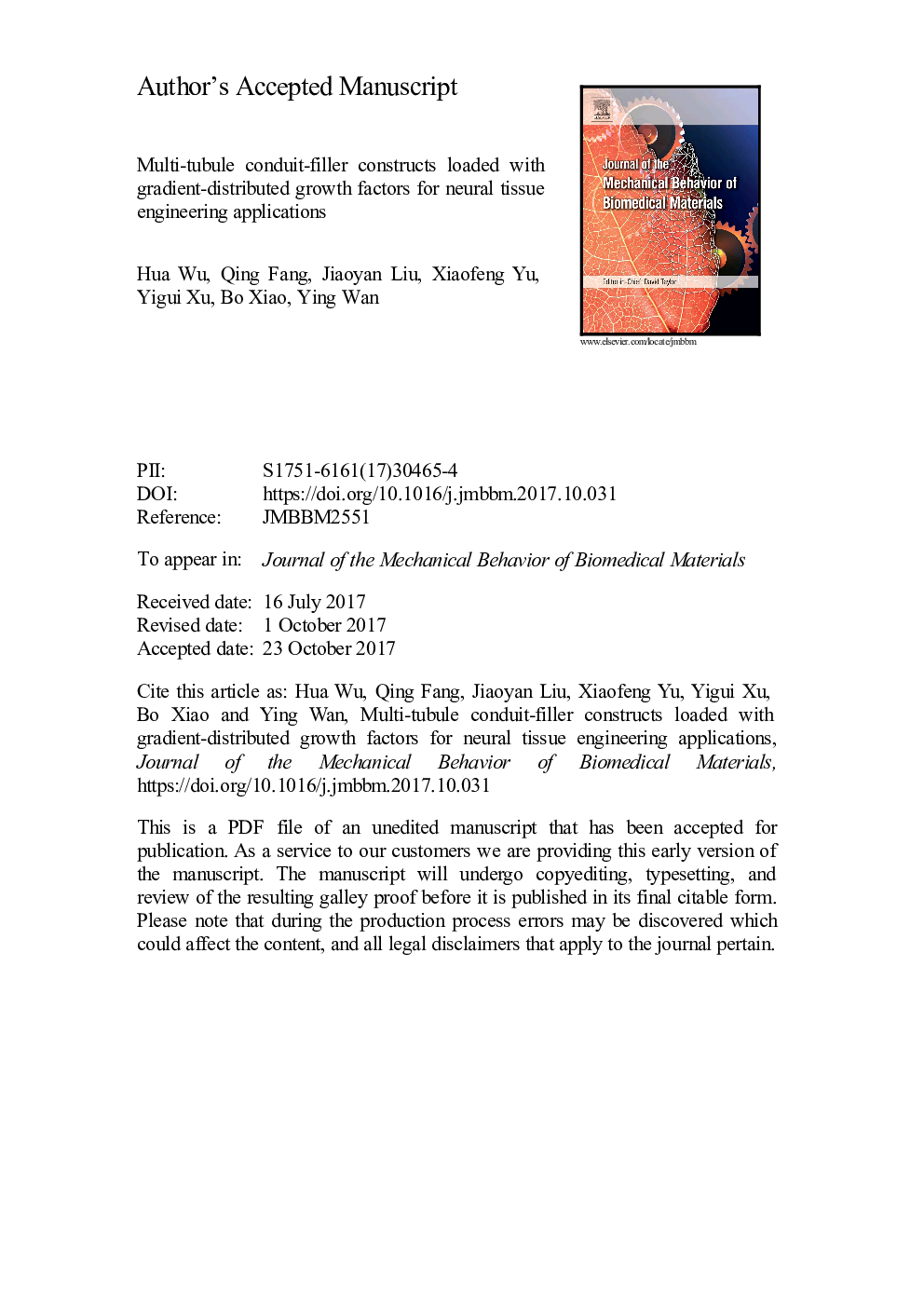| Article ID | Journal | Published Year | Pages | File Type |
|---|---|---|---|---|
| 7207406 | Journal of the Mechanical Behavior of Biomedical Materials | 2018 | 38 Pages |
Abstract
Chitosan/silk fibroin/glycerophosphate gels were loaded with nerve growth factor (NGF) and further processed into multi-tubule fillers. NGF was loaded into the fillers in such a way so that a NGF gradient was established longitudinally along the filler length. A type of poly(lactide-co-glycolide)(PLGA)/chitosan(CH) porous conduit was fabricated using a pre-crosslinking method. The filler was fully filled into the lumen of conduits to build multi-tubule conduit-filler constructs that are intended for long-gap peripheral nerve repair. In vitro degradation in a lysozyme-contained medium revealed that constructs had degradation-tolerant features and the optimized multi-tubule filler was capable of maintaining its multi-tubules unblocked for around 10-week. After being degraded for various periods up to 8 weeks, the optimal conduit-filler constructs showed confirmative ability to retain their compressive load, deformation recovery and tensile strength at about 80Â N/m, 75% and 15Â N/cm2 in wet state, respectively. The constructs were able to administer NGF release and to maintain persistent NGF gradients longitudinally distributed inside the PLGA/CH conduit for about 6 weeks or even longer. The PC12 cell neurite extension assay confirmed that the presently developed multi-tubule conduit-filler constructs were reliable for effectively preserving the bioactivity of released NGF.
Related Topics
Physical Sciences and Engineering
Engineering
Biomedical Engineering
Authors
Hua Wu, Qing Fang, Jiaoyan Liu, Xiaofeng Yu, Yigui Xu, Ying Wan, Bo Xiao,
